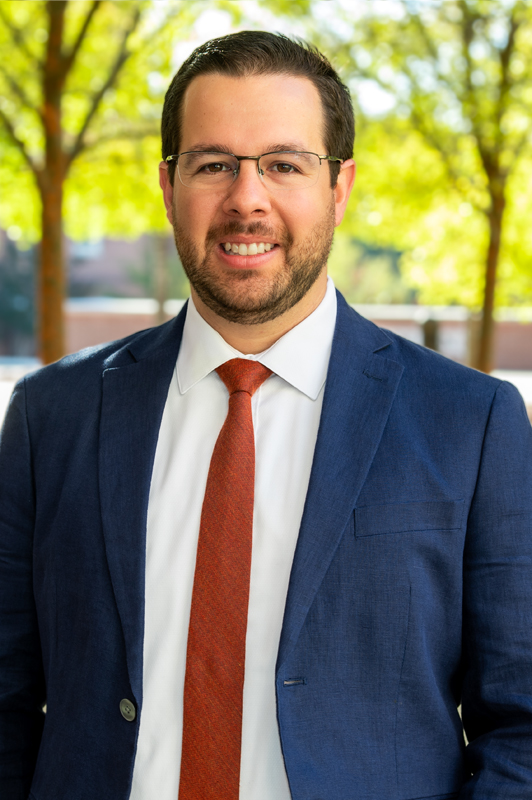Stormwater Research Facility to develop erosion and sediment control design guidelines
Published: Aug 28, 2024 8:00 AM
By Dustin Duncan
Auburn University's Stormwater Research Facility (AU-SRF) has been tasked with creating design guidelines for erosion and sediment control practices used on highway construction sites to minimize stormwater pollution.
Michael Perez, director of the AU-SRF and Brasfield & Gorrie associate professor in civil and environmental engineering, is the principal investigator (PI) on the three-year, $750,000 grant from the National Academy of Sciences’ National Cooperative Highway Research Program.
He said the erosion and sediment control industry is currently driven by generally accepted but not scientifically evaluated design guidelines. The resiliency or the risk of failure of these practices are not defined clearly or difficult to quantify with current design methods.
"That's the unique thing about our lab, — we're taking practices that have been used for a long time that nobody's had the opportunity to actually investigate through controlled research experiments," Perez said. "We're putting science behind it and trying to really understand how they perform, and also provide improved designs with consideration to resiliency and risk of failure."
The project focuses both on design elements and installation techniques. For example, the guidelines developed by the AU-SRF could provide national guidance on how to design and install an effective silt fence, which is typically used on construction sites to control sediment from stormwater runoff.
"These guidelines will consider best placement, site characteristics, topography, climate, the area around which runoff is anticipated, the types of soils in the region and anything that could impact their performance" Perez said.
According to Perez, the AU-SRF will perform large-scale testing at its facility. Xing Fang, Arthur H. Feagin Chair Professor for water resources in civil and environmental engineering, is co-PI on the project, along with Wes Donald, research fellow in civil and environmental engineering. The University of Tennessee, Oklahoma State University, Fagan Consulting, LLC in Prattville and JEO Consulting Group are partnering with Auburn on this project.
"We're thinking through and evaluating the science throughout the design steps and performing hydrologic analyses to see how practices are expected to perform," Fang said. "We plan to understand how the practices are expected to behave and how they fail."
The plan at the end of the project is to develop a guidebook for designers developing plans for engineers and contractors. Perez said it should be something designers can take off the shelf and have the best practices available, ultimately leading to better protection of waterbodies and neighboring areas downstream of construction sites.
"It will give the tools to know 'this is what I'm installing, and this is where I'm installing it, and the proper size for the practice to function as intended" Perez said. "The designers using these guidelines will know there's been thorough research behind it and can be confident knowing they are doing the job right."
The AU-SRF is part of Auburn University's Highway Research Center (HRC). Anton Schindler, director of the HRC, said that the NCHRP is one of the most prestigious grants in the transportation industry.
“Research teams from all across the country compete for NCHRP projects and only one team is selected by a panel of experts,” Schindler said. “Being awarded an NCHRP project is thus a career-defining achievement and indicates that this Auburn University team is considered to be among the nation’s best by their peers.”
Media Contact: , dzd0065@auburn.edu, 334-844-2326
Michael Perez, director of the AU-SRF and Brasfield & Gorrie associate professor in civil and environmental engineering, is the principal investigator (PI) on the three-year, $750,000 grant from the National Academy of Sciences’ National Cooperative Highway Research Program.


